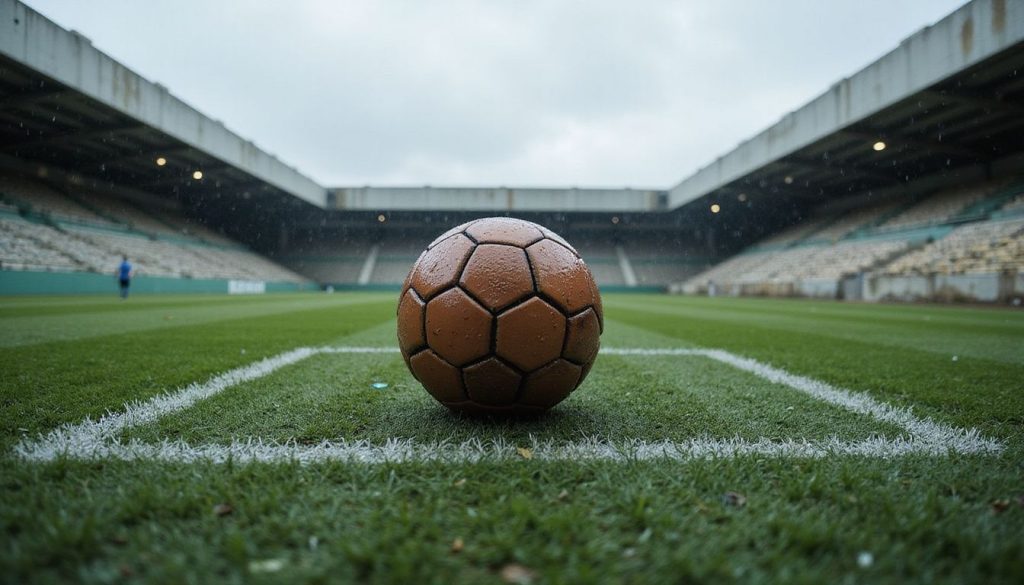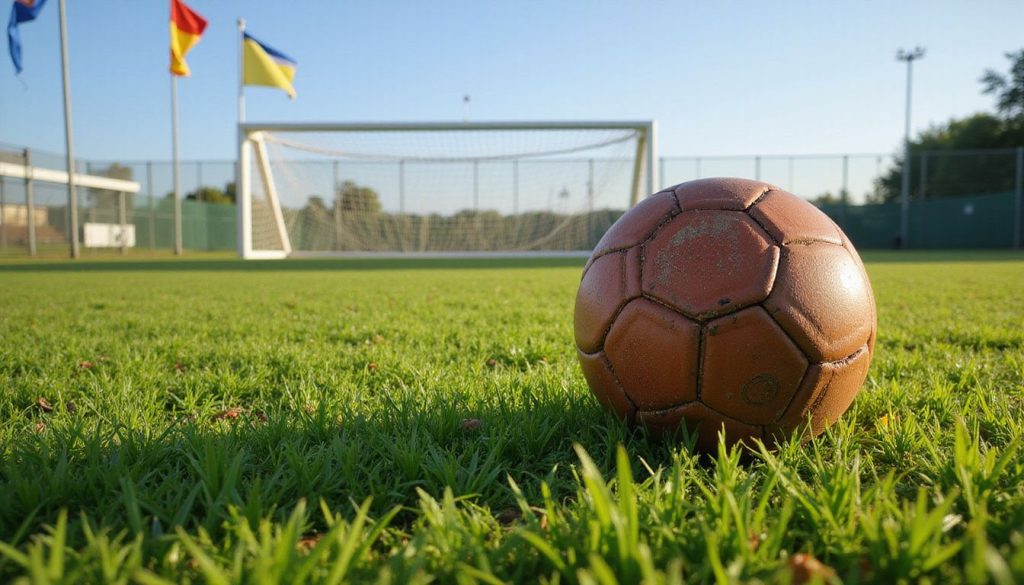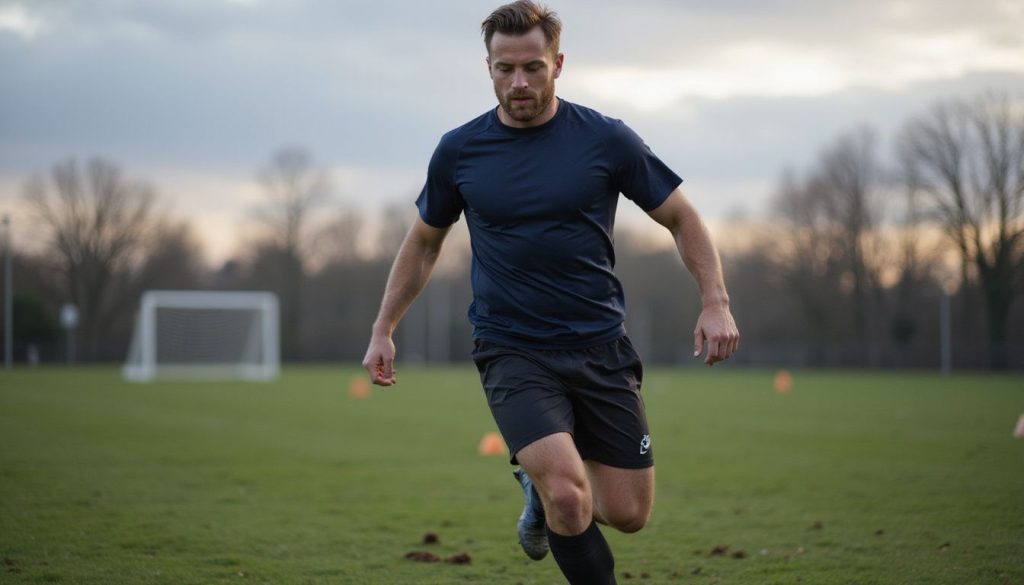Soccer Injury Prevention Exercises
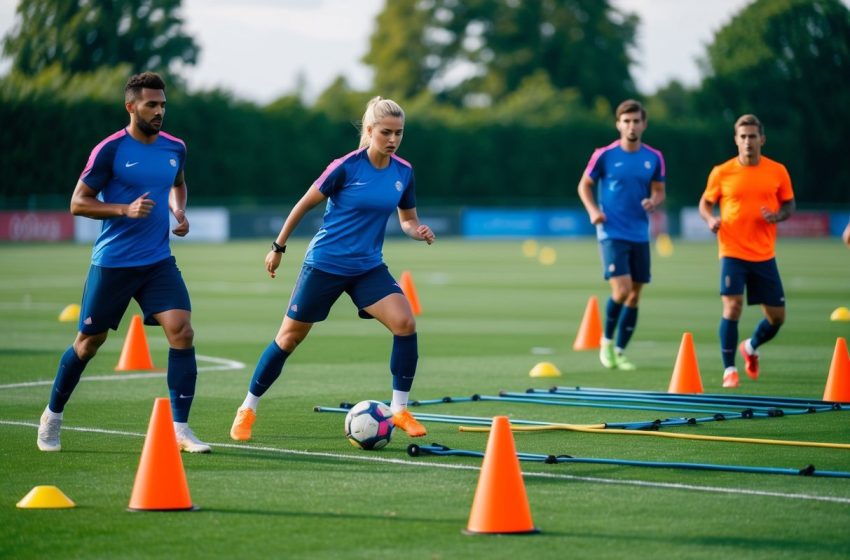
Soccer Injury Prevention Exercises: Simple Routines to Keep Players Safe
Staying healthy is key if you want to play soccer at your best all season long. Soccer injuries often happen because the game is fast-paced and puts a lot of stress on your muscles and joints. Doing simple injury prevention exercises can help protect your body and keep you from missing out on games.
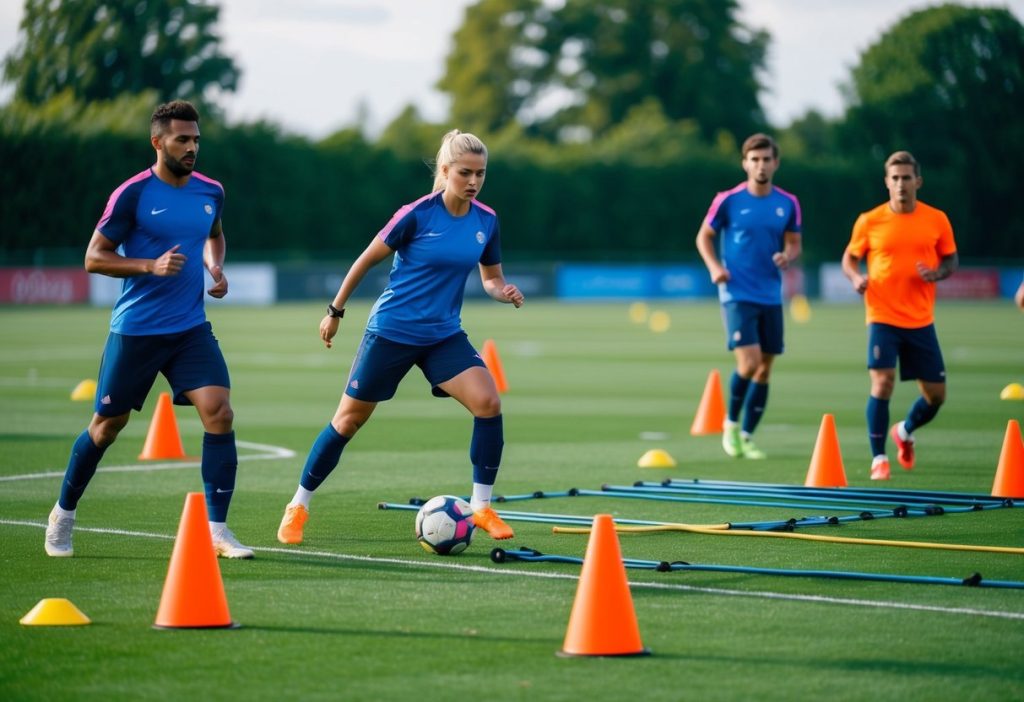
You don’t need fancy equipment or hours at the gym. Many soccer injury prevention exercises, like hamstring curls, calf raises, and balance activities, can fit into your regular warm-up. These moves build strength and stability, helping lower your risk of common soccer injuries such as sprains and muscle pulls.
Learning a few key exercises can make a big difference in how you feel on the field. With the right routine, you can help your body stay strong, play with confidence, and get more enjoyment from the game.
Fundamental Principles of Soccer Injury Prevention

Staying safe on the soccer field takes more than just luck. Building good habits, following smart routines, and using proper form during every practice and game can help you lower your risk of injury.
The Role of Injury Prevention Programs
Injury prevention programs are structured routines designed to help you reduce your chance of getting hurt. These programs use research-backed exercises and activities that target your muscles, balance, and coordination.
For example, many teams use the FIFA 11+ program, which combines core strengthening, balance challenges, and muscle warm-ups. Doing these routines regularly can cut injury rates significantly, especially knee and hamstring injuries.
You may be asked to do exercises like the Nordic hamstring curl or single-leg balance drills. These moves help protect areas most likely to get hurt in soccer. Following a set program keeps everyone on your team safer.
Importance of Warm-Up Routine
A good warm-up routine prepares your body for the demands of soccer. Warm-ups increase your heart rate, boost blood flow to your muscles, and help loosen your joints before activity.
Safe warm-up routines are more than just light jogging. Activities like dynamic stretching, quick footwork, and side steps get your muscles ready for action. Programs such as FIFA’s injury prevention warm-ups use proven routines that can lower injury risk by up to 50 percent.
When you warm up properly, you help prevent sudden muscle pulls or joint injuries as your body becomes ready for sprinting, stopping, and turning.
Proper Technique and Body Control
Using proper technique is key in lowering your injury risk. This means kicking, running, and tackling with the right form, not just going through the motions.
Staying in control of your body during fast moves keeps your knees, ankles, and hips safe. Practicing skills like landing softly when jumping or pivoting with your knees bent teaches your muscles and joints how to handle stress.
Sports medicine experts also recommend practicing balance and coordination drills. These make you steadier on your feet, so you are less likely to trip or fall awkwardly. When you focus on the right technique, you play more confidently and stay safer.
Effective Stretching and Flexibility Exercises

Stretching and flexibility exercises keep your muscles supple and ready for play. They help prevent soccer injuries, especially to the thigh muscles, and support better sports performance.
Dynamic Stretching Routines
Dynamic stretching uses controlled, active movements to warm up your muscles. This routine gets your body ready for a match or practice session and lowers your risk of strains.
Some good dynamic stretches for soccer include:
- Leg swings: Swing your leg forward and backward to loosen your hip flexors and hamstrings.
- High knees: March in place, lifting your knees up to your waist.
- Walking lunges: Step forward into a lunge, switch legs, and repeat.
- Butt kicks: Jog in place while quickly kicking your heels toward your glutes.
Doing these stretches before your game helps raise your heart rate and boosts flexibility in your hips, calves, quads, and hamstrings. Spend 5-10 minutes on dynamic stretching as part of your warm-up.
Flexibility Exercises for Soccer Players
Flexibility exercises let your major muscle groups move through their full range. This is especially important for your thigh muscles and groin because they work hard during soccer.
Try these flexibility moves after playing or on rest days:
- Seated groin stretch: Sit with your feet together and gently push your knees toward the ground.
- Standing quad stretch: Stand on one leg, grab the ankle of your other leg, and pull it toward your glutes.
- Standing calf stretch: Lean against a wall and press your back heel down.
- Lying hamstring stretch: Hold your leg straight up and gently pull it toward you.
Aim to hold each stretch for 20-30 seconds without bouncing. Doing these regularly helps keep your muscles long and less likely to get injured.
Strength and Conditioning for Injury Resistance

Building up your muscles, stabilizing your core, and working on your balance all help protect you against injuries in soccer. Good exercise programs focus on many areas, not just one, so you can move well and handle fast changes on the field.
Muscle Strength and Core Stability
Strong muscles help support your joints and lower the risk of strains or tears. Leg exercises like squats and deadlifts build strength in your hamstrings, quads, and glutes. These muscles are key for sprinting and kicking.
Core stability plays a main part in keeping your balance during quick moves and tackles. Planks, side planks, and Russian twists are simple core exercises. You should aim to train your core two to three times a week. A solid core also helps you keep good posture and recover after falls or bumps.
Tip: The FIFA 11+ warm-up program combines strength and core work. Try adding these routines to your training.
Balance Training for Stability
Soccer players change direction fast and often land on one foot. Good balance stops you from falling or rolling an ankle. To train stability, use single-leg stands, balance boards, or Bosu balls.
You can make these drills harder by closing your eyes or catching a ball at the same time. Short daily balance sessions help your body react better during sudden moves. Balance training gets your muscles and nervous system to work together.
List of simple balance drills:
- Single-leg stand (hold 30 seconds each leg)
- Hop-and-hold
- Side-to-side foot taps
Adding balance drills to your workouts can make a big difference in injury resistance.
Plyometrics and Conditioning Drills
Plyometric exercises build power and train your muscles to handle the quick stops and starts in soccer. Jump squats, box jumps, and lateral hops are all good options. These exercises improve how fast your muscles react and help prevent injuries like ACL tears.
Include plyometrics two to three times a week after your warm-up. Start with low reps and increase slowly to avoid overtraining. Mix these with conditioning drills, such as shuttle runs and sprints, to get used to game-like movements.
Keeping your muscles strong and quick means you can handle the demands of a match and are less likely to get hurt.
Targeted Exercises to Prevent Common Soccer Injuries

Soccer involves fast movements, quick turns, and physical contact. Certain parts of your body—like your knees, ankles, groin, and hamstrings—are especially at risk for injury, especially if you do not build strength and stability in these areas.
Preventing Knee and ACL Injuries
Your knees are always moving in soccer. Sudden stops, pivots, or awkward landings can hurt the ligaments, especially the anterior cruciate ligament (ACL).
Strengthening the muscles around your knees helps support and protect them. Exercises such as squats and lunges build your quadriceps, hamstrings, and glutes. Try to keep your knees behind your toes during these moves.
Single-leg balance drills and lateral side shuffles improve your knee stability. Add the Nordic hamstring exercise to help reduce the risk of ACL tears by building hamstring strength.
Keep your hips and core strong with planks and hip bridges. This reduces knee strain during sudden movements.
Ankle Injury Prevention and Support
Ankle injuries, including sprains, are common on the soccer field. Quick changes in direction and uneven surfaces make your ankles work hard.
Dynamic exercises, like ankle circles and calf raises, should be part of your warm-up and cool-down. This keeps your ankle joints mobile and strong.
Proprioceptive training—such as standing on one leg or using a balance board—teaches your body control and balance. These drills lower your risk of rolling an ankle.
For extra support, consider using ankle braces or taping if you have had ankle injuries before. Always wear proper soccer shoes for your playing surface.
Groin and Hamstring Strain Reduction
High-speed running and sudden direction changes can lead to groin and hamstring strains. These muscle injuries happen in both matches and practice.
Strengthen your groin with adductor squeeze exercises. Place a ball or pillow between your knees and squeeze to fire up the right muscles.
Add the Nordic hamstring curl to your weekly routine. Slowly lowering your body builds strong, flexible hamstrings, which are less likely to strain.
Include gentle dynamic leg swings and walking lunges to improve flexibility and prepare your muscles before training. Always cool down with light stretching to help recovery and avoid acute injuries.
Special Considerations and Recovery Strategies
Safe movement, managing stress-related injuries, and knowing when to seek professional advice are key parts of preventing soccer injuries. Paying attention to technique and rehab helps lower your risk of long-term problems.
Techniques for Safe Landing and Movement
Learning how to land safely after a jump is important. Bending your knees and landing on the balls of your feet can decrease the stress on your ankles and knees. It helps to keep your body balanced and upright to avoid rolling an ankle or straining muscles.
Practice these steps to support safe movement:
- Keep your core tight for steadiness.
- Land with knees slightly bent, not locked.
- Push off both feet evenly when changing direction.
Pay attention to your foot care. Wearing the right shoes and checking for signs of plantar fasciitis—like heel pain—can help prevent bigger issues. Good landing techniques can also lower your risk of foot and achilles tendon injuries.
Managing Overuse and Stress-Related Injuries
Repetitive movements in soccer, such as running or frequent kicking, can lead to overuse injuries. Common problems include achilles tendonitis, stress fractures, and even achilles tendon rupture if swelling and strain are ignored.
If you start to feel pain, don’t push through it. Early signs might include swelling, soreness, or discomfort that doesn’t go away with rest. The RICE method—Rest, Ice, Compression, Elevation—can help with mild symptoms.
Take regular rest days during your schedule. Mix in alternative training like swimming to give overworked muscles and tendons a break. Always build up intensity slowly to help your body adapt and avoid injuries.
Guidance from Sports Medicine Professionals
Seeing a medical professional who specializes in sports injuries can make a big difference. They can help you with exercises for proper rehabilitation and make sure you recover fully.
Sports medicine providers will guide you about when it’s safe to return to play and suggest specific rehab for injuries like stress fractures or tendon problems. This reduces your chances of re-injury.
If you have repeated pain, difficulty moving, or signs of serious injury, get help right away. Following expert advice ensures you heal well and avoid long-term setbacks.
Frequently Asked Questions
Soccer injury prevention is focused on smart warm-ups, targeted strength exercises, careful cool downs, physical therapy, and proven training routines. Using evidence-based strategies can help reduce your chances of common injuries while supporting your strength and flexibility.
What are some effective warm-up routines to prevent injuries in soccer?
Start by jogging or brisk walking for 5–10 minutes to increase your heart rate.
Dynamic stretches like leg swings, lunges with a twist, and high knees help prepare your muscles.
Include agility drills such as short sprints, side shuffles, and quick direction changes.
Can you recommend any knee-strengthening exercises to avoid soccer injuries?
Bodyweight squats and lunges are great for building knee stability.
Add single-leg balances or single-leg squats to improve control and strength.
Step-ups and resistance band exercises for your hamstrings and quads also support your knees.
What cool down exercises are beneficial for soccer players post-match to avert injuries?
Active recovery like light jogging or walking brings your heart rate down safely.
Static stretching for your hamstrings, quads, calves, and hip flexors can help with muscle recovery.
Foam rolling may reduce soreness and stiffness.
How can physical therapy be incorporated into injury prevention for soccer athletes?
A physical therapist can design a plan to address your weak areas and correct muscle imbalances.
They might teach you proper movement and strengthening exercises.
If you’ve had a previous injury, a therapist can help prevent re-injury with guided recovery routines.
What is the FIFA-recommended injury prevention warm-up for soccer players?
The FIFA 11+ program is a set of structured warm-up exercises designed to lower injury risk.
It includes running drills, strength, balance, and agility work.
You should complete it before practices and matches for best results.
Are there specific exercises to reduce the risk of ACL injuries for soccer players?
Single-leg hops, lateral jumps, and balance drills are helpful for ACL prevention.
Strengthening your hips, glutes, and hamstrings can give your knees extra support.
Practicing landing mechanics and proper cutting techniques is important to protect your ACL.

